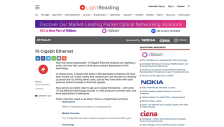Browse Resources
(25 classifications) (12 resources)
| Access control
(1)
Computer-assisted instruction. (4) Developing countries (1) Economic aspects (1) Evaluation. (2) Government policy (3) Handbooks, manuals, etc. (4) History (4) International cooperation (1) Law and legislation (4) Management (4) Maps (1) |
Periodicals
(1)
Planning. (2) Programmed instruction. (1) Publishing (1) Remote access (1) Research (4) Security measures (30) Social aspects (8) Software (5) Standards (7) Study and teaching (3) Technological innovations (10) United States (4) |
Resources | |||||||||||||||||||||||||||||||||||||||||||||||||||
|---|---|---|---|---|---|---|---|---|---|---|---|---|---|---|---|---|---|---|---|---|---|---|---|---|---|---|---|---|---|---|---|---|---|---|---|---|---|---|---|---|---|---|---|---|---|---|---|---|---|---|---|
| |||||||||||||||||||||||||||||||||||||||||||||||||||
| Next → | |||||||||||||||||||||||||||||||||||||||||||||||||||




